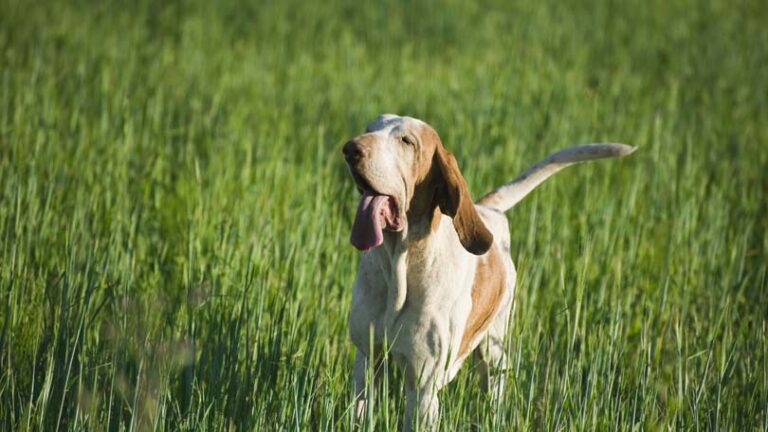I lost my Dog
You come home from work and put your dog in what you thought was a securely fenced backyard but when you open the backdoor and call his name, the backyard is empty. Or, you take your dog for a walk through the neighborhood park and he stumbles upon a deer that bolts when she sees him. You chase your dog through the woods in hot pursuit of the quarry but he quickly outpaces you and you are forced to stop.
Either way, he is gone and now you are left wondering how to find your lost dog!
Help! I lost my Dog!
As the panic rises, you realize your best friend is all alone in a big scary world. Will he remember his way home? Are you willing to wait that long? Nope! Its time to take action so no matter how upset you are, you have to stay calm and think clearly.
You best chance of finding him still in your neighborhood is within the first few hours. Leave some food and water in your yard and ask a neighbor that your dog knows and likes to watch the house for you in case he returns. Leave them with a leash and/or a key to your house to put him away safely and make sure they have your cell phone number so they can call to give you the good news.
Now get out there and pound the pavement. Call friends and family to help in the search. Ask someone who can give a good description of your dog to contact radio stations and your local animal control, leaving your cell phone number as a contact.
Dogs are attracted to areas where other dogs are, livestock or ponds, restaurants or other places that smell yummy. Bring one of your dog’s canine pals with you and a whistle; whistles carry farther then your voice and may attract his curiosity. Look under decks, porches, into backyards, and around garbage cans for your friend and if you hear a strange dog bark, investigate in case your dog is the cause of the commotion.
If a couple of hours have gone by and your dog is still on the loose, go home and make up some ‘Missing Pet’ flyers. Include a full description, a picture, your contact information and where he went missing. Post these on every power pole, every corner, every mailbox, and every community bulletin board within a wide area of your house. Make sure they are waterproof – plastic sleeves for each page are a cheap fix here but make sure you put the page in upside down in case of rain. Staple gun or securely tape them up so that they do not come off and become litter. Offering a reward helps to attract people’s interest and make them more likely to call you if they find your dog.
Keep looking for him on foot, even in the dark. Bring a flashlight, as your dog’s eyes will reflect the light, making him easy to see.
If you live near shops or businesses, give them a flyer a post and ask the staff to keep an eye open for your dog.
Mailmen are great allies! They know your neighborhood better then anyone and do not want stray dogs roaming the streets anymore then you want your dog out there on his own!
Call the radio stations again! And call the police.
Carry an extra leash, water and food as well as a blanket with you in your car at all times in case you spot your dog or someone calls you with a location.
Visit your animal shelters each and every day. Even though they have a description of your dog, shelters get busy and your dog may slip through without anyone putting two and two together.
Newspaper ads are not as effective as they once were but craigslist and local online news lists can be another way of alerting the public to your plight!
Visit vets within a 10-mile radius of where your dog was lost and ask them to post your flyer. Many people take stray dogs to a vet if they are injured or if the animal control officers are busy or closed for the night.
As Time Goes By
The longer your dog is missing, the harder it will become to find him. Dogs wander on and their range will increase with time. If you do find him, it may also take a bit to ‘capture’ him if he has become distrustful of people. Be ready for any contingency and once he is back in your care, take him to the vet for a full check up and especially deworming!
Keeping your Dog Safe
Collars and tags are your dog’s most important items to keeping your dog safe. Make sure his collar is secure and cannot slip off easily. Update his tags if you move or change phone numbers. Add your vet’s phone number to the collar and make sure your last name is on the tag. Most vet offices will tell people to bring the dog to them for safety if no one can get a hold of you.
Microchips injected into the dog are another way of keeping dog’s safe. However, they will never replace the collar and tags entirely because they can only be read with a specific scanner. Tags can be read by whoever finds your dog, shortening the time apart considerably.
Make sure fences are secure, gates are closed and even locked if you live in high traffic area, and that nothing is near the fence that could be used as a way out i.e. a ladder, picnic table, wood pile, etc.
The most important thing to remember if your dog becomes lost is to not panic! Panicking is normal but it is not going to help find your dog. Stay calm, call friends and family for help and make sure someone is always at your house in case he comes home on his own.

Having discovered a fondness for insects while pursuing her degree in Biology, Randi Jones was quite bugged to know that people usually dismissed these little creatures as “creepy-crawlies”.







